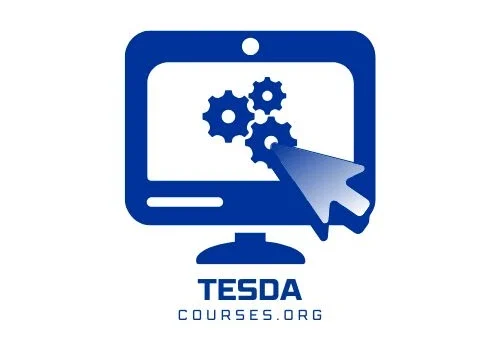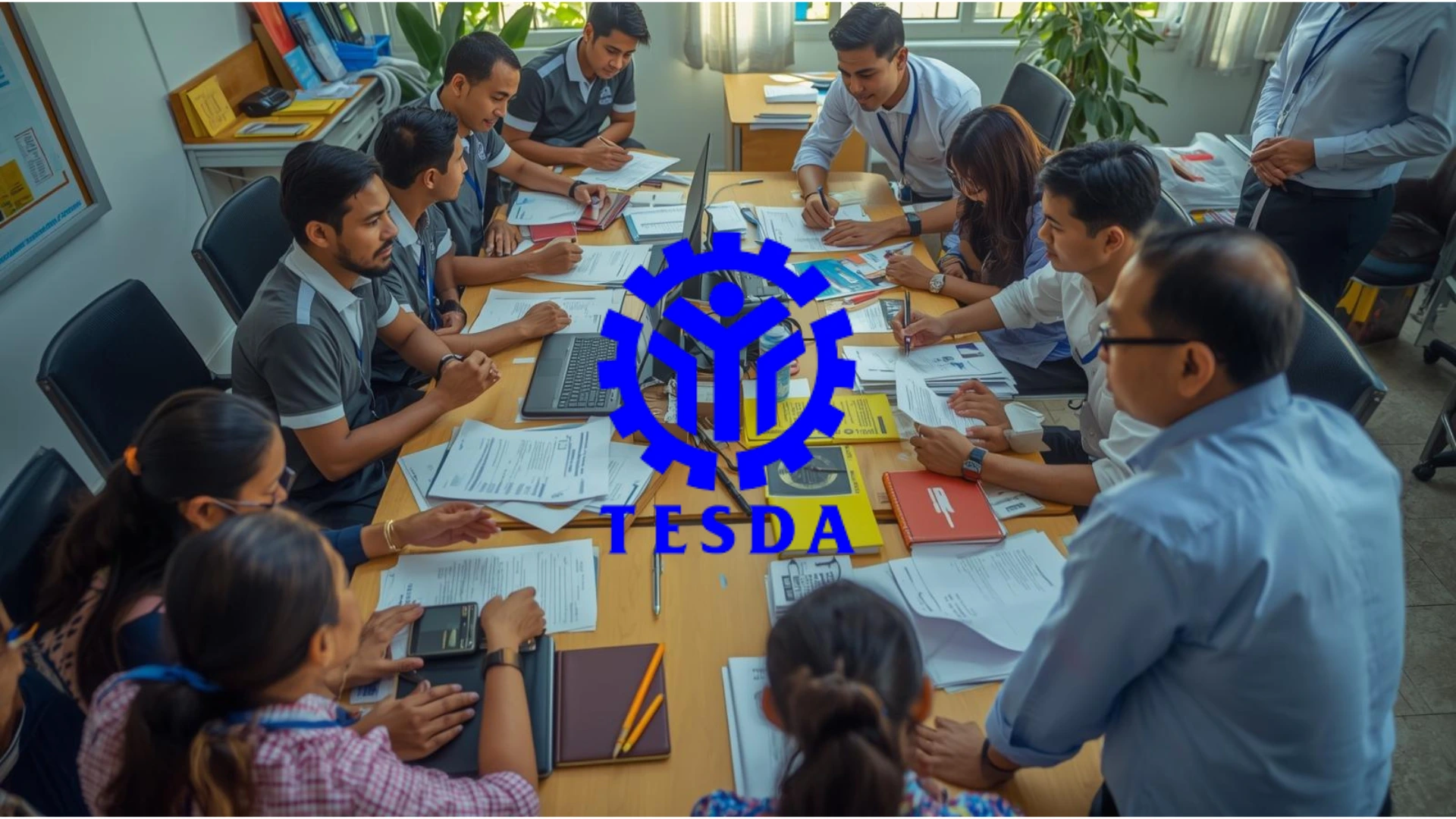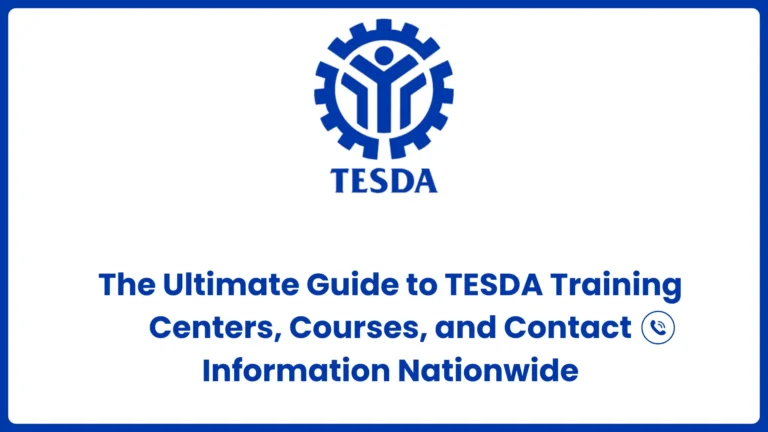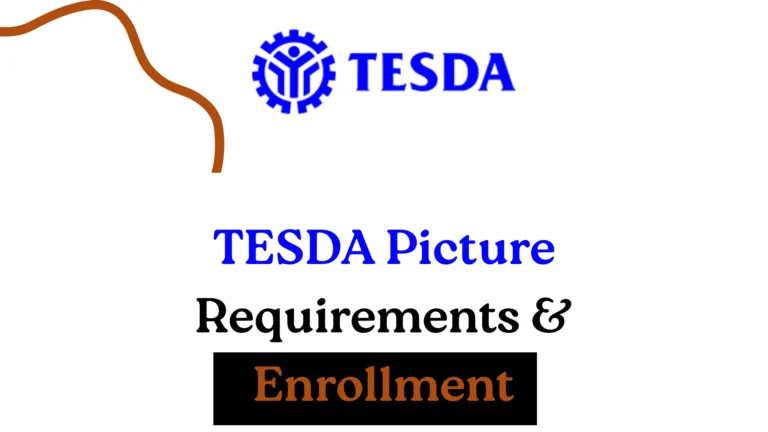The Ultimate Guide to TESDA Accreditation Process in the Philippines: Everything You Need to Know
Introduction: Why TESDA Accreditation Should Matter to You
Picture this: You’ve just landed in the Philippines, excited about learning a new skill that’ll boost your career prospects. You’re scrolling through training centers, and suddenly you see those four letters—TESDA. But what does it actually mean? And more importantly, why should you care?
Here’s the thing—I’ve watched countless international students make the mistake of enrolling in non-accredited programs, only to realize later that their certificates hold about as much weight as a paper airplane in a typhoon. That’s not going to be you, though.
The TESDA accreditation process isn’t just some bureaucratic hoop that training centers jump through. It’s your safety net, your quality guarantee, and frankly, your ticket to making sure you’re not wasting time and money on subpar education. Think of TESDA accreditation like a Michelin star for training centers—except instead of judging fancy food, they’re evaluating whether an institution can actually teach you marketable skills.
In this comprehensive guide, I’m breaking down everything you need to know about TESDA accreditation. Whether you’re trying to understand what makes a training center legitimate or you’re genuinely curious about the entire accreditation framework, I’ve got you covered. Let’s dive in.
What Exactly Is TESDA and Why Does Accreditation Matter?
Before we get into the nitty-gritty of the TESDA accreditation process, let’s establish some context. TESDA—the Technical Education and Skills Development Authority—is basically the Philippines’ quality watchdog for technical and vocational education. They’re the ones making sure that when you enroll in a welding course, you actually learn how to weld and don’t just spend three months watching YouTube videos.
TESDA accreditation is the official stamp of approval that says, “Yes, this training center meets our standards. They have proper facilities, qualified trainers, and a curriculum that’ll actually prepare you for the real world.” It’s not just a fancy certificate on the wall—it’s a commitment to quality education.
For you as an international student, this matters because:
- Your certificate will be recognized not just in the Philippines, but often internationally
- You’ll receive quality training from properly qualified instructors
- Your investment is protected because accredited centers are regularly monitored
- Job opportunities expand since employers trust TESDA-accredited qualifications
Now, here’s where it gets interesting. Not all training programs are created equal, and the TESDA program accreditation process ensures that what you’re learning is current, relevant, and actually useful.
Understanding the TESDA Accreditation Requirements: The Foundation
Let’s talk about what training centers need to do to earn that coveted accreditation. I know you’re thinking, “Why should I care about their requirements?” But trust me, understanding this helps you evaluate whether a center is genuinely accredited or just slapping a fake logo on their brochure.
The Core TESDA Accreditation Requirements
The TESDA accreditation requirements are surprisingly comprehensive. Training centers need to tick several boxes:
1. Legal and Organizational Requirements
- Valid business registration and permits
- Clear organizational structure
- Compliance with labor laws and regulations
- Proper insurance coverage
2. Physical Facility Standards Meeting TESDA facility accreditation standards means having:
- Adequate classroom space (specific square meters per student)
- Proper lighting and ventilation
- Safety equipment and emergency exits
- Clean restrooms and drinking water facilities
- Accessibility features for persons with disabilities
3. Training Equipment and Materials This is where many centers stumble. They need:
- Industry-standard equipment in working condition
- Sufficient tools for hands-on practice
- Updated learning materials and references
- Safety gear for all students
4. Qualified Trainers The TESDA trainer accreditation requirements are strict. Trainers must:
- Hold relevant technical qualifications
- Have industry experience (usually 3-5 years)
- Complete TESDA’s Training of Trainers program
- Maintain updated certifications
5. Curriculum Compliance Programs must follow TESDA’s Training Regulations (TR), which specify:
- Learning outcomes and competencies
- Duration of training
- Assessment methods
- Graduate requirements
Document Requirements That Actually Matter
When I say TESDA accreditation document requirements, I’m talking about a substantial pile of paperwork. But here’s what really matters:
| Document Category | Specific Requirements | Why It Matters |
|---|---|---|
| Legal Documents | Business permits, DTI/SEC registration, Mayor’s permit | Proves legitimacy |
| Facility Documents | Property title/lease, safety certificates, floor plans | Ensures proper learning environment |
| Program Documents | Training design, curriculum, assessment tools | Guarantees quality education |
| Trainer Documents | Trainer qualifications, employment contracts, training certificates | Confirms instructor competency |
| Financial Documents | Budget plans, fee structure, accounting system | Shows financial stability |
The TESDA Accreditation Process Steps: A Reality Check
Alright, let’s walk through the actual TESDA accreditation process steps. This isn’t a weekend project—it’s more like running a marathon while juggling flaming torches. But understanding the process helps you appreciate what accredited centers have gone through.
Step 1: Pre-Assessment and Preparation (1-3 months)
Training centers don’t just wake up one day and apply for accreditation. There’s serious groundwork involved:
- Conducting a self-assessment against TESDA standards
- Identifying gaps in facilities, equipment, or documentation
- Training staff on compliance requirements
- Organizing all required documents
Reality check: Most centers spend 2-3 months just getting their ducks in a row. If a center tells you they got accredited in two weeks, something’s fishy.
Step 2: Formal Application Submission
This is where the TESDA accreditation application officially begins. Centers must:
- Download and complete the TESDA accreditation form from the official website
- Compile all supporting documents
- Pay the TESDA accreditation fee (typically ranging from ₱5,000 to ₱15,000 depending on the program)
- Submit everything to their provincial or regional TESDA office
Pro tip: The TESDA accreditation online application system has made this process more streamlined, but many centers still prefer in-person submission for the first-time application.
Step 3: Document Review and Verification (2-4 weeks)
TESDA doesn’t just rubber-stamp applications. They conduct a thorough TESDA accreditation evaluation process:
- Reviewing completeness and accuracy of documents
- Verifying trainer qualifications
- Checking curriculum alignment with Training Regulations
- Assessing financial viability
If documents are incomplete or non-compliant, the center gets feedback and must resubmit. This back-and-forth can extend the timeline significantly.
Step 4: Site Visit and Physical Assessment (1 day, but crucial)
Here’s where theory meets reality. TESDA assessors actually visit the training center for the TESDA accreditation assessment. They’re checking:
- Physical facilities against declared specifications
- Equipment functionality (they’ll ask trainers to demonstrate)
- Safety compliance (fire exits, first aid, emergency procedures)
- Trainer qualifications through interviews
- Overall learning environment
This is make-or-break time. I’ve heard stories of centers failing because their “state-of-the-art equipment” was actually broken or outdated.
Step 5: Assessment Results and Conditional Approval (1-2 weeks)
After the site visit, assessors prepare their findings. Three outcomes are possible:
- Full Accreditation Recommended – You nailed it
- Conditional Accreditation – Fix these specific issues within a timeframe
- Denial – Back to the drawing board
Most centers receive conditional approval with minor corrections needed. The TESDA accreditation compliance checklist guides them on what needs fixing.
Step 6: Final Approval and Certificate Issuance (2-4 weeks)
Once all conditions are met, TESDA issues the official accreditation certificate. This includes:
- Accreditation certificate valid for 2-5 years
- List of accredited programs
- Maximum student capacity
- Conditions and limitations (if any)
The Complete TESDA Accreditation Process Timeline
So, how long does TESDA accreditation take? Let me give you the honest answer:
| Phase | Timeframe | Variables That Affect Duration |
|---|---|---|
| Preparation | 1-3 months | Center’s readiness, resource availability |
| Application Processing | 2-4 weeks | Document completeness, TESDA workload |
| Site Visit Scheduling | 1-4 weeks | Assessor availability, center location |
| Assessment | 1 day | Number of programs being assessed |
| Results and Corrections | 2-6 weeks | Severity of issues found |
| Final Approval | 2-4 weeks | Administrative processing |
| TOTAL | 3-6 months | Can extend to 8-12 months if major issues arise |
The TESDA accreditation process timeline varies significantly. A well-prepared center with proper facilities might breeze through in 3-4 months. A center starting from scratch? You’re looking at 8-12 months minimum.
Navigating TESDA Accreditation Challenges: The Real Talk
Let’s be honest—the TESDA accreditation process challenges are real, and they’re not talked about enough. I’ve seen training centers struggle, and understanding these hurdles helps you appreciate what accredited institutions have overcome.
Challenge #1: Financial Constraints
The TESDA accreditation cost goes way beyond application fees. Centers must invest in:
- Upgrading facilities to meet standards (₱500,000 – ₱2,000,000+)
- Purchasing industry-grade equipment (₱300,000 – ₱1,500,000)
- Trainer certification programs (₱20,000 – ₱50,000 per trainer)
- Administrative systems and documentation (₱50,000 – ₱200,000)
Reality check: Small training centers often struggle to secure this capital, which is why you see fewer accredited centers in rural areas.
Challenge #2: Trainer Qualification Gaps
The TESDA trainer accreditation requirements are rigorous. Many experienced technicians lack:
- Formal teaching qualifications
- Updated industry certifications
- Proper documentation of work experience
Centers must invest significant time and money in getting their trainers properly certified. This can take 3-6 months per trainer.
Challenge #3: Keeping Up with Training Regulations
TESDA training regulations get updated regularly to reflect industry changes. Centers must:
- Revise curricula when Training Regulations change
- Update equipment to match new standards
- Retrain instructors on new competencies
- Reapply for accreditation when major changes occur
This ongoing compliance effort never really ends.
Challenge #4: Documentation Overwhelm
The TESDA accreditation document requirements are extensive. Centers struggle with:
- Organizing years of operational records
- Creating systematic documentation processes
- Maintaining updated files for trainers, students, and equipment
- Preparing for regular compliance audits
Many centers fail their first assessment simply because their paperwork isn’t in order, even if their training quality is excellent.
Challenge #5: Regional Office Variations
Here’s something they don’t always tell you—TESDA accreditation guidance can vary slightly between regional offices. What’s acceptable in Metro Manila might need adjustment in Davao. Centers operating in multiple regions face extra complexity.
The Benefits of TESDA Accreditation: Why It’s Worth the Hassle
Now that we’ve covered the challenges, let’s talk about the TESDA accreditation benefits. Trust me, they’re substantial—for both training centers and you as a student.
Benefits for Training Centers
1. Enhanced Credibility and Market Position Accredited centers can:
- Attract more students due to reputation
- Charge premium fees justified by quality
- Partner with government programs and scholarships
- Access TESDA grants and support services
2. Legal Authority to Issue Certificates Only TESDA accredited training centers can issue:
- National Certificates (NC) upon assessment
- Training certificates recognized by employers
- Documents eligible for further education credits
3. Business Sustainability The TESDA accreditation advantages include:
- Regular monitoring that maintains quality standards
- Technical support from TESDA
- Protection from unfair competition with unaccredited providers
- Eligibility for international partnerships
4. Quality Improvement Framework Accreditation forces continuous improvement:
- Regular assessments identify areas for enhancement
- Access to updated Training Regulations
- Networking with other accredited centers
- Professional development opportunities for trainers
Benefits for You as a Student
This is where it gets personal. Choosing a TESDA accredited training center gives you:
1. Quality Assurance
- Guaranteed minimum standards in facilities and instruction
- Curriculum aligned with industry needs
- Qualified, certified trainers
- Safe learning environment
2. Recognized Certification Your certificates from accredited centers are:
- Accepted by employers nationwide
- Often recognized internationally
- Eligible for further education pathways
- Valid for government jobs requiring technical skills
3. Assessment Opportunities Only students from accredited centers can:
- Take competency assessments at TESDA accredited assessment centers
- Earn National Certificates (NC I, NC II, NC III, NC IV)
- Access TESDA’s Competency Assessment and Certification System
4. Financial Protection Accredited centers are monitored for:
- Fair pricing and transparent fees
- Proper handling of student records
- Completion of training programs as advertised
- Ethical business practices
5. Career Advantages Employers specifically look for:
- TESDA-certified graduates
- Training from recognized institutions
- Proof of competency through National Certificates
- Updated skills matching current industry standards
How to Choose the Right TESDA Accredited Training Center
Alright, so you’re convinced that accreditation matters. But how do you actually choose among TESDA accredited institutions? Let me share some insider tips I’ve gathered from helping international students navigate this decision.
Step 1: Verify Accreditation Status
Never take a center’s word for it. Here’s how to check TESDA accreditation status:
- Official TESDA Website Method:
- Visit the official TESDA portal
- Navigate to the “Accredited Institutions” section
- Search by institution name, location, or program
- Verify the accreditation validity period
- Regional Office Inquiry:
- Contact your local TESDA provincial/regional office
- Request written confirmation of accreditation
- Ask about any sanctions or conditional accreditations
- Physical Verification:
- Visit the training center personally
- Request to see the original accreditation certificate
- Check the expiry date and covered programs
- Verify the certificate number with TESDA
Red flag: If a center hesitates to show documentation or says “it’s being processed,” walk away.
Step 2: Evaluate Specific Programs
Remember, accreditation is often program-specific. A center might have TESDA program accreditation for automotive repair but not for culinary arts. Always verify:
- The specific course you want is covered by accreditation
- The program follows current Training Regulations
- The duration and content match TESDA standards
- Assessment opportunities are available upon completion
Step 3: Assess Facilities and Equipment
Use the TESDA facility accreditation standards as your checklist:
Workshops and Laboratories:
- Are they spacious and well-maintained?
- Does equipment look modern and functional?
- Are there enough tools for hands-on practice?
- Is safety equipment readily available?
Learning Environment:
- Clean, well-lit classrooms
- Comfortable temperature and ventilation
- Proper seating and work surfaces
- Library or resource center access
Safety Standards:
- Visible emergency exits and fire extinguishers
- First aid kits and trained personnel
- Clear safety protocols and signage
- Insurance coverage for students
Step 4: Check Trainer Qualifications
The TESDA trainer accreditation ensures instructor quality. When visiting, ask about:
- Trainer educational backgrounds
- Years of industry experience
- Teaching certifications and TESDA accreditation
- Continuing professional development
Pro tip: Don’t be shy—request to meet your potential instructors. Their expertise directly impacts your learning experience.
Step 5: Review Graduate Outcomes
Smart centers proudly share their track record. Look for:
- Employment rates of graduates
- National Certificate pass rates in competency assessments
- Graduate testimonials and success stories
- Industry partnerships and job placement support
Ask specifically: “What percentage of your graduates pass the competency assessment on their first try?” A good accredited center should have a 70%+ pass rate.
Step 6: Compare Costs Transparently
While TESDA accreditation fees for centers vary, student tuition should be reasonable and transparent. Evaluate:
| Cost Component | What to Look For | Red Flags |
|---|---|---|
| Tuition Fees | Itemized breakdown, aligned with program duration | Hidden charges, vague pricing |
| Materials | Clear list of included items vs. what you must buy | Excessive material fees |
| Assessment | Information on separate competency assessment costs | Mandatory bundled assessments at inflated prices |
| Additional Charges | Registration, ID, certificate fees clearly stated | Surprise charges after enrollment |
Remember, higher fees don’t automatically mean better quality. Some excellent accredited centers offer affordable programs through government subsidies.
Step 7: Consider Location and Schedule Flexibility
For international students, practical matters count:
- Accessibility: Is the center near public transport?
- Schedule options: Do they offer evening or weekend classes?
- Housing support: Can they recommend accommodation nearby?
- Language support: Are instructors comfortable with English-speaking students?
Step 8: Gauge Institutional Support Services
Top TESDA accredited training centers offer:
- Academic advising and career counseling
- Job placement assistance or partnerships with employers
- Alumni networks for continued support
- Flexible payment plans or scholarship information
TESDA Accreditation Renewal: What Happens Next?
Accreditation isn’t forever. The TESDA accreditation renewal process ensures centers maintain standards over time. Here’s what you should know as a student.
Understanding Accreditation Validity
TESDA accreditation typically lasts 2-5 years, depending on:
- Initial vs. renewal application (renewals may get longer validity)
- Assessment results and compliance history
- Program complexity and risk factors
- Center’s track record
The Renewal Process
TESDA accreditation renewal follows a similar but streamlined process:
- Application Submission (3-6 months before expiry)
- Centers must apply for renewal before accreditation expires
- Updated documentation reflecting changes since last accreditation
- Evidence of continuous compliance and quality improvement
- Compliance Review
- TESDA reviews monitoring visit reports from the accreditation period
- Checks if previous conditions or recommendations were addressed
- Evaluates student outcomes and competency assessment results
- Re-Assessment
- Another site visit, though often less intensive
- Focus on changes, updates, and continuous improvement
- Verification that standards are being maintained
- Renewal Decision
- Approval for another term (often longer if perfect compliance)
- Conditional renewal requiring specific improvements
- Denial requiring fresh application
What If Accreditation Lapses?
This is critical. If a center’s accreditation expires without renewal:
- They cannot issue TESDA certificates
- Current students may need to transfer
- Previous graduates’ certificates remain valid
- The center must cease operations until re-accredited
For you: Always check that your chosen center’s accreditation is valid for your entire program duration, plus a buffer for the assessment period after graduation.
TESDA Accreditation Compliance: Staying on the Right Side
Once accredited, centers undergo continuous TESDA accreditation compliance monitoring. Understanding this helps you recognize well-managed institutions.
Regular Monitoring Visits
TESDA conducts surprise compliance monitoring visits during the accreditation period:
- Checking facility and equipment maintenance
- Reviewing student records and training documentation
- Interviewing current students about their experience
- Verifying trainer employment and qualifications
- Ensuring adherence to approved curriculum
Centers caught cutting corners face:
- Written warnings and corrective action orders
- Conditional status requiring immediate improvements
- Accreditation suspension (students can’t enroll but current ones can finish)
- Accreditation revocation (full closure required)
Student Feedback Mechanisms
Many TESDA accredited training centers use feedback systems:
- Regular satisfaction surveys
- Grievance procedures for complaints
- Exit interviews with graduates
- Employer feedback on graduate performance
As a student, you have rights. If your accredited center isn’t meeting standards, you can report to TESDA through:
- Email to the regional office
- The TESDA hotline
- Official complaint forms on the TESDA website
Quality Assurance Indicators
The TESDA accreditation quality assurance framework focuses on:
- Input Quality – facilities, trainers, equipment, curriculum
- Process Quality – teaching methods, assessment practices, student support
- Output Quality – graduate competencies, employment rates, assessment pass rates
- Outcome Quality – long-term career success, employer satisfaction
Top accredited centers don’t just meet minimum standards—they continuously strive for excellence across these dimensions.
Understanding TESDA Circulars and Updates
Here’s something many students overlook: TESDA accreditation circulars and policy updates. These documents shape how accreditation works and what you can expect.
Key Types of TESDA Circulars
- Training Regulations (TR) Updates
- Define competencies for specific qualifications
- Specify training duration and assessment standards
- Get revised to match industry evolution
- Accreditation Guidelines
- Detail requirements and procedures
- Clarify documentation standards
- Update compliance criteria
- Program Registration Circulars
- Cover TESDA program registration and accreditation requirements
- Explain new program approval processes
- List eligible qualifications
- Assessment and Certification Updates
- Changes to competency assessment procedures
- New certification requirements
- Assessment center guidelines
Recent TESDA Accreditation New Requirements (2024-2025)
Stay updated on TESDA accreditation new requirements. Recent changes include:
- Enhanced digital capabilities: Centers must have online learning management systems
- Sustainability standards: Environmental and safety protocols strengthened
- Inclusive education: Accessibility requirements for persons with disabilities
- Industry 4.0 integration: Technology-enhanced learning in relevant programs
- Flexible learning pathways: Recognition of online and blended delivery modes
The Ultimate Guide to TESDA Free Courses Online: Certificates, Allowances, and How to Enroll ?
Where to Find Official Updates
To stay informed about TESDA accreditation process updates:
- Official TESDA Website (www.tesda.gov.ph)
- Circulars and advisories section
- Downloadable policy documents
- Press releases on major changes
- TESDA Regional Offices
- Bulletin boards with latest updates
- Regular stakeholder meetings
- Direct inquiries to staff
- TESDA Official Social Media
- Facebook page announcements
- Twitter updates
- YouTube webinars and orientations
TESDA Accreditation for Different Institution Types
Not all training providers are the same. Let’s break down how TESDA accreditation works across different institutional contexts.
TESDA Accreditation for Schools and Colleges
Many educational institutions offer technical-vocational programs alongside academic degrees. TESDA accreditation for schools involves:
Unique Considerations:
- Integration with academic governance structures
- Dual compliance (TESDA + DepEed/CHED requirements)
- Resource sharing between academic and technical programs
- Faculty qualification crossover
Advantages:
- Existing infrastructure often meets TESDA standards
- Established administrative systems
- Credibility with students and parents
- Diverse program offerings
Challenges:
- Bureaucratic complexity with multiple agencies
- Cultural resistance to “vocational” education stigma
- Budget allocation between academic and technical programs
- Trainer vs. teacher qualification distinctions
TESDA Accreditation for Private Training Centers
Standalone TESDA accredited training centers face different dynamics:
Strengths:
- Focused entirely on technical-vocational training
- Agile response to industry needs
- Direct industry partnerships
- Specialization in specific fields
Challenges:
- Significant capital investment required
- Competition with established institutions
- Building reputation from scratch
- Financial sustainability during early years
TESDA Accreditation for Company-Based Training
Some companies operate internal training programs. Their TESDA accreditation process includes:
- Training employees for specific company needs
- Potentially opening programs to external students
- Strong industry relevance
- Often excellent equipment due to operational use
TESDA Accredited Assessment Centers
This deserves special attention. TESDA accredited assessment centers are distinct from training centers:
Key Differences:
| Aspect | Training Center | Assessment Center |
|---|---|---|
| Primary Function | Deliver training programs | Conduct competency assessments only |
| Accreditation Focus | Facilities, trainers, curriculum | Assessors, tools, assessment processes |
| Student Interaction | Weeks/months of instruction | One-day assessment |
| Certificate Issued | Training Certificate of Completion | National Certificate (NC) if competent |
Why This Matters to You:
- You can train at one accredited center and assess at another
- Assessment centers must maintain neutrality and objectivity
- National Certificates come from assessment centers, not training centers
- Choose assessment centers with high-quality assessors and fair practices
Getting Help During Your TESDA Accreditation Journey
Navigating this landscape can feel overwhelming. Here’s where to get TESDA accreditation help when you need it.
Official TESDA Support Services
1. Provincial and Regional Offices Each region has TESDA offices providing:
- Free information and guidance
- Application form distribution
- Accreditation status verification
- Complaint resolution
Contact Information:
- Find your regional office at www.tesda.gov.ph
- Walk-in hours: Usually Monday-Friday, 8:00 AM – 5:00 PM
- Bring valid ID and specific questions
2. TESDA Hotlines and Online Services
- National Hotline: Check current number on TESDA website
- Email inquiries to regional offices
- Online chat support (when available)
- Social media messaging (response times vary)
3. Technical Assistance Programs TESDA offers TESDA accreditation process support through:
- Orientation sessions for aspiring training providers
- Consultation services during application preparation
- Workshops on compliance requirements
- Post-accreditation capacity building
Third-Party Assistance
1. Industry Associations Many sectors have associations that support member institutions:
- Philippine Association of Technical and Vocational Institutions (PATVI)
- Industry-specific groups (construction, hospitality, automotive, etc.)
- Chambers of commerce offering business development support
2. Consultancy Services Professional consultants specialize in:
- Application preparation and documentation
- Facility design and compliance audits
- Trainer development programs
- Quality management system implementation
Caveat: Ensure any consultant you engage has legitimate experience. Ask for references and success stories.
3. Educational Resource Centers Some universities and development organizations offer:
- Research and policy analysis on TVET
- Training for trainers and administrators
- Resource materials and toolkits
- Networking opportunities
For International Students: Special Considerations
As an international student seeking training in the Philippines, you might need help with:
1. Understanding Philippine Context
- Educational system differences
- Cultural nuances in training delivery
- Local employment practices
- Practical living arrangements
2. Visa and Immigration Issues
- Student visa requirements for technical training
- Special Study Permit (SSP) applications
- Length of stay aligned with program duration
- Post-training work opportunities
3. Credential Recognition
- How TESDA certificates translate in your home country
- International equivalency frameworks
- Documentation for credential assessment abroad
- Additional certifications that boost global recognition
Where to Get Help:
- Philippine embassies or consulates in your home country
- International student offices at larger training institutions
- Expat communities and forums in the Philippines
- Your home country’s education or labor attachés
Real Stories: TESDA Accreditation in Action
Let me share some real-world scenarios that illustrate why understanding TESDA accreditation matters.
Case Study 1: Maria’s Culinary Journey
Maria, from Indonesia, wanted to train as a professional chef in the Philippines. She initially enrolled in a non-accredited “culinary school” that promised international certification. Three months and ₱80,000 later, she discovered:
- Her certificate wasn’t recognized by employers
- She couldn’t take the TESDA competency assessment
- The school’s “international affiliation” was fabricated
- Her visa sponsorship documentation was questionable
Maria had to start over, this time at a TESDA accredited training center. The result?
- Six-month program following proper Training Regulations
- Hands-on training with professional-grade equipment
- Passed the NC II assessment for Cookery
- Now employed at a 5-star hotel in Manila
The Lesson: The extra time researching accreditation saved her from wasting resources and gave her legitimate credentials.
Case Study 2: TechSkills Training Center’s Accreditation Journey
A startup training center in Cebu wanted to offer IT programs. Their TESDA accreditation application experience:
Initial Attempt (Failed):
- Rushed application with incomplete documents
- Trainers lacked proper TESDA certification
- Equipment inventory didn’t match declared list
- Result: Denial and one-year delay
Second Attempt (Successful):
- Spent six months methodically preparing
- Invested ₱1.2 million in facility upgrades
- Sent all trainers for proper accreditation
- Hired a consultant for documentation support
- Result: Approved with 3-year validity
Three Years Later:
- Successfully trained 500+ students
- 85% competency assessment pass rate
- Renewed accreditation with 5-year validity
- Expanded to three additional programs
The Lesson: The TESDA accreditation process challenges are real, but the payoff justifies the investment.
Case Study 3: Juan’s Assessment Center Experience
Juan completed welding training at an accredited center in Davao. When time came for his competency assessment:
At a Quality Assessment Center:
- Clear instructions and fair assessment criteria
- Proper equipment and materials provided
- Professional assessors with current industry knowledge
- Results within two weeks
- Passed NC II on first attempt
His Friend at a Questionable Center:
- Confusing instructions and unclear standards
- Substandard materials affecting performance
- Assessor seemed unprepared
- Results delayed for two months
- Failed assessment, disputed the evaluation
The Lesson: Choosing the right TESDA accredited assessment center is as important as choosing a good training center.
Common Myths About TESDA Accreditation Debunked
Let’s address some misconceptions I frequently encounter:
Myth 1: “All Training Centers in the Philippines Are TESDA Accredited”
Reality: Absolutely not. Many training providers operate without accreditation. Some legitimate centers offer non-technical programs outside TESDA’s jurisdiction, but others are simply avoiding scrutiny. Always verify.
Myth 2: “TESDA Accreditation Is Just About Paperwork”
Reality: While documentation is important, the TESDA accreditation assessment criteria thoroughly evaluate actual capabilities—facilities, equipment, trainer competence, and learning outcomes.
Myth 3: “More Expensive Training Centers Have Better Accreditation”
Reality: Cost doesn’t correlate with accreditation status. Some accredited centers keep costs low through government partnerships, while expensive centers might not be accredited at all.
Myth 4: “You Can’t Fail TESDA Accreditation If You Apply”
Reality: Rejection and conditional accreditation are common. TESDA’s standards are genuine, and centers that don’t meet them don’t get approved.
Myth 5: “TESDA Certificates Are Only Valid in the Philippines”
Reality: While TESDA certificates are Philippines-issued, many are internationally recognized, especially in countries with mutual recognition agreements. The TESDA accreditation framework aligns with international competency standards in many fields.
Myth 6: “Once Accredited, Always Accredited”
Reality: Accreditation requires renewal, and centers must maintain standards continuously. The TESDA accreditation renewal process ensures ongoing quality, and accreditation can be revoked for non-compliance.
Myth 7: “Online Training Can’t Be TESDA Accredited”
Reality: Post-pandemic, TESDA has developed frameworks for blended and online learning delivery. Centers can receive accreditation for flexible learning modes if they meet specific criteria for online content quality and student support.
The Future of TESDA Accreditation: What’s Coming
The landscape of technical-vocational education is evolving rapidly. Here’s what the TESDA accreditation framework is adapting to:
Industry 4.0 and Digital Skills
Emerging Requirements:
- Integration of artificial intelligence and automation in training
- Emphasis on digital literacy across all programs
- Virtual reality and simulation-based learning tools
- Data analytics for student progress tracking
What This Means for You: Even traditional trades like welding or carpentry now include digital components. Accredited centers are increasingly required to offer these modern competencies.
Green Skills and Sustainability
The Philippines is prioritizing environmental sustainability. Expect:
- Green building and renewable energy programs
- Sustainable agriculture techniques
- Circular economy and waste management training
- Environmental compliance in all programs
Flexible and Modular Learning
The TESDA accreditation training programs are shifting toward:
- Shorter, stackable micro-credentials
- Recognition of prior learning and experience
- Part-time and evening programs for working students
- Blended online-offline delivery models
International Collaboration
TESDA is strengthening international partnerships:
- Mutual recognition agreements with other countries
- Curriculum harmonization with regional standards (ASEAN)
- Exchange programs for trainers and students
- International quality benchmarking
Impact on International Students: Your TESDA qualifications will become even more valuable globally as these partnerships expand.
The Complete Guide to TESDA Scholarships: How to Get Your Allowance and Train for Free
Practical Tips for International Students
Let me wrap up with specific, actionable advice for navigating the TESDA accreditation process as an international student.
Before You Arrive in the Philippines
1. Research and Verify Online
- Use the TESDA accreditation status checking tools on the official website
- Join Filipino expat and student forums for recommendations
- Connect with alumni from your prospective training centers
- Review the center’s social media presence and student feedback
2. Understand Your Program’s Recognition
- Check if your desired qualification has international equivalency
- Research TESDA accreditation certification duration and renewal dates
- Verify if the program aligns with career goals in your home country
- Contact professional bodies in your country about credential recognition
3. Plan Your Budget Realistically Factor in more than just tuition:
| Expense Category | Estimated Monthly Cost (₱) | Notes |
|---|---|---|
| Tuition | Varies widely | ₱15,000-₱50,000 total for most programs |
| Accommodation | ₱8,000-₱20,000 | Dorms cheaper than private rentals |
| Food | ₱6,000-₱12,000 | Eating out vs. cooking affects costs |
| Transportation | ₱2,000-₱5,000 | Depends on distance from training center |
| Learning Materials | ₱2,000-₱5,000 | One-time or per-term |
| Assessment Fees | ₱2,000-₱5,000 | Separate from tuition, paid once |
| Miscellaneous | ₱3,000-₱8,000 | Personal expenses, emergencies |
4. Sort Out Legal Requirements
- Apply for the appropriate visa (check with Philippine embassy)
- Understand Special Study Permit (SSP) requirements
- Get health insurance that covers the Philippines
- Prepare apostilled documents from your home country if needed
During Your Training
1. Stay Engaged with Quality Standards Don’t be a passive student. If you notice issues that violate TESDA accreditation compliance standards:
- Broken or insufficient equipment
- Unqualified substitute instructors
- Unsafe conditions
- Deviation from the approved curriculum
Document these concerns and raise them with:
- Training center management first
- TESDA regional office if unresolved
- Student welfare coordinators
2. Build Your Network
- Connect with fellow students from different countries
- Develop relationships with instructors (they’re industry contacts)
- Join alumni groups for job leads
- Participate in industry events and competitions
3. Document Your Learning
- Keep portfolios of your work and projects
- Request detailed training logs and attendance records
- Take photos of your practical work (with permission)
- Collect reference letters from instructors
These materials help when applying for jobs or seeking credential recognition abroad.
4. Prepare Thoroughly for Assessment The competency assessment at a TESDA accredited assessment center is your ticket to the National Certificate:
- Practice all competencies repeatedly
- Study the training regulations and assessment criteria
- Do mock assessments if your center offers them
- Arrive early on assessment day with all required materials
- Stay calm and demonstrate competencies systematically
After Completing Your Training
1. Get All Your Documentation Before leaving the Philippines, ensure you have:
- Original training certificate of completion
- National Certificate (after passing assessment)
- Training transcript showing competencies achieved
- Proof of training center’s accreditation status
- Reference letters from instructors or center director
2. Understand Credential Recognition For using your TESDA qualifications abroad:
- Contact credential assessment agencies in your destination country
- Research if additional certifications or licensing are required
- Keep all original documents safe (make certified copies)
- Get documents authenticated by appropriate authorities if needed
3. Stay Connected
- Maintain relationships with the training center
- Join professional associations related to your field
- Follow TESDA updates that might affect your credential
- Consider returning for advanced programs or refresher courses
The TESDA Accreditation Advantage: Your Investment in Quality
Here’s the bottom line: understanding the TESDA accreditation process isn’t just about knowing bureaucratic procedures. It’s about recognizing quality, protecting your investment, and ensuring your education translates into real opportunities.
The Quality Equation
When you choose a TESDA accredited training center, you’re getting:
Verified Quality = Proper Facilities + Qualified Trainers + Updated Curriculum + Ongoing Monitoring + Industry Recognition
Without accreditation, any of these elements could be missing, and you’d only discover it after wasting time and money.
The ROI Perspective
Let’s talk return on investment. A typical technical-vocational program at an accredited center might cost:
- Tuition: ₱20,000 – ₱40,000
- Materials and fees: ₱5,000 – ₱10,000
- Living expenses (3-6 months): ₱60,000 – ₱150,000
- Assessment: ₱2,000 – ₱5,000
- Total investment: ₱87,000 – ₱205,000
Compare this to potential earnings with a TESDA National Certificate:
- Entry-level positions: ₱15,000 – ₱25,000/month
- With experience (2-3 years): ₱25,000 – ₱45,000/month
- Specialized roles: ₱45,000 – ₱80,000+/month
Break-even timeline: 4-14 months in employment
But here’s the catch—without proper accreditation and certification, you might not even get hired, making your entire investment worthless.
The Opportunity Cost
Every month spent at a non-accredited, low-quality center is a month not spent:
- Actually learning marketable skills
- Building genuine industry connections
- Earning professional credentials
- Advancing your career
The TESDA accreditation benefits include avoiding this costly detour.
Your TESDA Accreditation Checklist: Taking Action
Alright, we’ve covered a lot of ground. Here’s your practical checklist to make smart decisions:
✅ Pre-Enrollment Research Checklist
Accreditation Verification:
- [ ] Searched training center on official TESDA website
- [ ] Confirmed specific program is accredited (not just the institution)
- [ ] Verified accreditation expiry date extends beyond program completion
- [ ] Obtained written confirmation from TESDA office if uncertain
Facility and Resource Check:
- [ ] Visited the training center in person
- [ ] Inspected workshops, laboratories, and equipment
- [ ] Verified equipment is functional (not just displayed)
- [ ] Checked cleanliness, safety, and maintenance standards
- [ ] Confirmed adequate tools and materials for student-to-equipment ratio
Trainer Evaluation:
- [ ] Reviewed trainer qualifications and experience
- [ ] Confirmed trainers hold TESDA accreditation
- [ ] Met or observed trainers in action if possible
- [ ] Asked about trainer-to-student ratios
Program Quality Indicators:
- [ ] Reviewed complete curriculum aligned with Training Regulations
- [ ] Asked about graduate employment rates
- [ ] Checked competency assessment pass rates
- [ ] Spoke with current students or alumni
- [ ] Verified industry partnerships or job placement support
Financial Transparency:
- [ ] Obtained itemized fee breakdown in writing
- [ ] Confirmed no hidden charges or surprise fees
- [ ] Understood payment terms and refund policies
- [ ] Compared costs with other accredited alternatives
- [ ] Asked about scholarships or payment plans
Legal and Practical:
- [ ] Confirmed center can provide visa sponsorship documents
- [ ] Checked location and accessibility
- [ ] Understood schedule options (full-time, part-time, etc.)
- [ ] Reviewed policies on absences, leave, and program completion
- [ ] Got all agreements in writing
✅ During Training Monitoring Checklist
- [ ] Training follows approved curriculum
- [ ] Equipment remains functional and accessible
- [ ] Qualified trainers deliver all sessions
- [ ] Safety protocols are consistently followed
- [ ] Progress is tracked and documented
- [ ] Concerns are addressed promptly by management
✅ Pre-Assessment Preparation Checklist
- [ ] Completed all required training hours
- [ ] Practiced all competencies extensively
- [ ] Reviewed Training Regulations and assessment criteria
- [ ] Selected an appropriate TESDA accredited assessment center
- [ ] Registered and paid assessment fees
- [ ] Prepared all required documents and materials
- [ ] Confirmed assessment date, time, and location
✅ Post-Completion Checklist
- [ ] Received training certificate of completion
- [ ] Passed competency assessment and obtained National Certificate
- [ ] Collected all academic records and transcripts
- [ ] Secured reference letters
- [ ] Made copies of accreditation documents
- [ ] Researched credential recognition in destination country
- [ ] Connected with alumni network
The Ultimate Guide to TESDA Requirements: Enrollment, Certification, and Center Accreditation
Frequently Asked Questions: Your Burning Questions Answered
Let me address the most common questions I receive about TESDA accreditation:
Q1: Can I train at a non-accredited center and just take the assessment separately?
Short answer: Technically yes, but practically difficult.
Long answer: TESDA allows anyone to take competency assessments regardless of where they trained (or if they learned through work experience). However, most people struggle to pass without proper structured training. Non-accredited centers often don’t follow Training Regulations correctly, leaving gaps in your competencies. Plus, many TESDA accredited assessment centers require proof of training or relevant work experience before allowing assessment.
My advice: Don’t take this risk. Train properly at an accredited center.
Q2: What’s the difference between TESDA registration and accreditation?
Great question. They’re different processes:
- TESDA Registration: Initial approval to operate a training program. Think of it as getting permission to start.
- TESDA Accreditation: Full verification that the program meets quality standards. This is the gold standard.
TESDA program registration and accreditation can sometimes be confused, but accreditation is more comprehensive and provides better quality assurance.
For students: Always choose accredited over merely registered programs.
Q3: How much does TESDA training actually cost?
It varies enormously:
- Public TESDA Training Centers: Often free or minimal fees (₱500-₱5,000) for scholarship programs
- Private Accredited Centers: ₱15,000-₱100,000+ depending on program complexity and duration
- Company-Sponsored Training: Free if you’re employed by the sponsoring company
Additional costs:
- Assessment fees: ₱2,000-₱5,000
- Materials and tools: ₱2,000-₱10,000
- Living expenses during training
Money-saving tip: Check if you qualify for TESDA scholarships (TWSP – Training for Work Scholarship Program). Many international students overlook this opportunity.
Q4: Can I work while studying at a TESDA training center?
Legally: Check your visa conditions. Student visas typically prohibit work, but Special Study Permits might have different rules.
Practically: Most intensive technical programs are full-time and demanding. Part-time work might be possible for longer programs with flexible schedules.
My recommendation: Focus fully on training to maximize your learning and assessment success. The program duration is relatively short—treat it as an intensive investment period.
Q5: Are online TESDA courses accredited?
Yes and no. TESDA has developed flexible learning delivery standards post-pandemic:
- Some programs allow blended learning (online theory + in-person practical)
- Purely online courses exist for certain competencies
- Fully online accreditation requires meeting specific technological and support standards
Critical point: Hands-on technical skills still require physical practice. Be skeptical of purely online programs for trades like welding, culinary arts, or automotive repair.
Verify: Check if the specific online program is accredited, not just the institution.
Q6: What happens if my training center loses accreditation while I’m enrolled?
TESDA has safeguards:
- Grace Period: Current students usually get time to complete their programs
- Transfer Options: TESDA may facilitate transfer to other accredited centers
- Certificate Validity: If you received your certificate before revocation, it typically remains valid
- Make-Up Arrangements: For incomplete training, TESDA coordinates alternatives
Your protection: Always keep documentation of enrollment dates and completed competencies.
Prevention: Choose established centers with good compliance history. Check TESDA accreditation status verification regularly during your program.
Q7: Do employers really care about TESDA accreditation?
Absolutely yes. Here’s why:
- Government Jobs: Require TESDA certificates for technical positions
- Large Corporations: Use accreditation as a screening criterion
- International Employers: Recognize TESDA as quality assurance
- Skilled Worker Visas: Many countries accept TESDA certificates for migration
Real scenario: Two candidates apply for the same position. One has a certificate from an accredited center with NC II, the other from a non-accredited institution. The first candidate gets hired 95% of the time.
Bottom line: Employers see TESDA accreditation as validation of your competencies.
Q8: How do I know if my TESDA certificate will be recognized in my home country?
Research path:
- Check Mutual Recognition Agreements:
- ASEAN countries have skills recognition frameworks
- Some bilateral agreements exist (Australia, Canada, etc.)
- Contact your country’s equivalent of TESDA
- Credential Assessment Services:
- Countries like Canada have official assessment bodies (WES, ICES, etc.)
- They evaluate foreign credentials against local standards
- May require course descriptions and competency details
- Professional Licensing Bodies:
- Some trades require additional local licensing
- TESDA training counts toward requirements in many jurisdictions
- Research specific occupation regulations
Pro tip: Before enrolling, email credential assessment agencies in your destination country with the TESDA program details. They can pre-advise on recognition.
Q9: Can I get TESDA training for free as an international student?
Possible but rare. Here are your options:
1. Scholarship Programs:
- TESDA occasionally offers scholarships to international students from partner countries
- Check with your country’s Philippine embassy
- ASEAN scholarship programs sometimes include TVET
2. Company Sponsorship:
- If employed by a Philippines-based company, they might sponsor training
- Some multinational companies send employees for TESDA training
3. NGO and Development Programs:
- Occasionally funded by international development organizations
- Usually targeted at specific demographics or countries
Reality check: Most international students pay full tuition. However, costs are generally much lower than equivalent training in Western countries.
The Ultimate Guide to TESDA Training Centers, Courses, and Contact Information Nationwide
Q10: What’s the best TESDA program for international job opportunities?
High-demand globally:
- Welding and Metal Fabrication – Needed everywhere, good pay
- Healthcare-related (Caregiving, Massage Therapy) – Aging populations globally
- Maritime and Seafaring – Philippines is a major source of seafarers
- IT and Digital Skills – Universal demand, work-from-anywhere options
- Hospitality and Culinary – International hotels and restaurants
- Automotive Technology – Specialized skills transfer across borders
- Electrical Installation and Maintenance – Critical infrastructure needs
Consider:
- Your existing skills and interests
- Language requirements (some roles need strong English)
- Physical demands and working conditions
- Licensing requirements in your target country
- Long-term career progression
My advice: Choose programs aligned with skills shortages in your target country. Research labor market information before deciding.
Conclusion: Your Next Steps Toward Quality Technical Education
We’ve journeyed through the entire landscape of TESDA accreditation—from understanding what it is, why it matters, how the process works, to making smart choices as an international student.
Here’s what I want you to take away:
TESDA accreditation isn’t just a bureaucratic formality. It’s the difference between legitimate, quality education and potentially wasted time and money. It’s your assurance that when you invest in technical-vocational training in the Philippines, you’re getting real skills, recognized credentials, and genuine career opportunities.
The TESDA accreditation process might seem complex, but now you understand its purpose: protecting you, the student, while ensuring training centers maintain high standards. Every requirement, every assessment criterion, every compliance check exists to give you the best possible learning experience.
Making Your Decision
As you consider technical-vocational education in the Philippines:
Do your homework. Use the tools and checklists I’ve provided. Verify accreditation status. Visit training centers. Ask tough questions. Don’t settle for vague answers or missing documentation.
Think long-term. A few extra weeks researching and choosing the right TESDA accredited training center pays dividends for years. Your certificate isn’t just a piece of paper—it’s your entry ticket to skilled employment, international opportunities, and career advancement.
Invest in quality. Whether you’re paying ₱20,000 or ₱60,000 for training, ensure you’re getting genuine value. Accreditation is your guarantee that quality exists.
Your Action Plan
This week:
- Identify 3-5 potential training programs aligned with your goals
- Verify their accreditation status on the official TESDA website
- Reach out to current students or alumni for firsthand feedback
This month:
- Visit your top 2-3 training centers in person (or virtually)
- Complete the pre-enrollment checklist
- Confirm visa and legal requirements
- Plan your budget including living expenses
Before enrollment:
- Get all agreements and fees in writing
- Verify the trainer qualifications for your specific program
- Confirm assessment center options for your qualification
- Prepare all required documents
TESDA Courses for Abroad: The Ultimate Guide to In-Demand NC II & NC III Certifications
Final Thoughts
The Philippines has built a robust technical-vocational education system through TESDA. As an international student, you have access to affordable, quality training that can genuinely transform your career prospects. But only if you choose wisely.
Don’t let the complexity of the TESDA accreditation process intimidate you. Instead, let it empower you. You now know more about accreditation than most students—use that knowledge to make informed decisions.
The journey to skilled employment starts with a single step: choosing the right training. Make it count. Choose accredited. Choose quality. Choose your future wisely.
Ready to start? Visit the official TESDA website today, use their search tools to find accredited programs, and begin your journey toward internationally recognized technical skills. Your future self will thank you for doing this right.
About TESDA: The Technical Education and Skills Development Authority (TESDA) is the Philippines’ authority on technical education and skills development. For official information, visit www.tesda.gov.ph or contact your nearest regional office.
Disclaimer: This guide provides general information about TESDA accreditation. Requirements and procedures may change. Always verify current information with official TESDA sources before making enrollment decisions.
Have questions about TESDA accreditation? Share your experiences or concerns in the comments below. Let’s help each other navigate the path to quality technical education in the Philippines!







